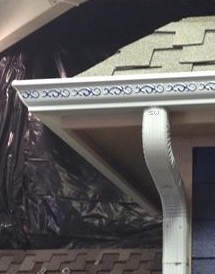Everything You Need to Know About Systems Testing on Roofs

By Zach Stopyro for DaVinci Roofscapes
Roofing materials need to be tested individually as a whole to make sure everything works together.
The roofing industry individually tests roofing pieces, usually checking to see how a specific roofing tile tests on its own in weather, temperature fluctuations, climates and fire conditions. Conversely, system testing checks every part of the roofing system. The unique pieces of the roof are tested, from underlayments to flashings to fasteners and even how adhesives are added.
The National Roofing Contractors Association (NRCA) has an article that explains “Choosing the Right Roofing Material for Your Home.” They define the roof system as having these five properties:
1 - Roof covering – Shingles, tile, slate or metal, along with an underlayment that protects the sheathing from the weather.
2 - Sheathing – Boards or sheet materials that are fastened to the roof rafters to cover a structure.
3 - Roof structure – Rafters and trusses constructed to support the sheathing.
4 - Flashing – Sheet metal or other material installed into a roof system’s various joints and valleys. This prevents water seepage.
5 - Drainage – A roof system’s design features, such as shape, slope and layout, that affect its ability to shed water.
Product testing versus system testing
Here’s a key thing to know. When people discuss fire ratings for roofs, they’re talking about a performance as a system, not as a specific product. That’s why it’s important to understand what products go into a roof system, and how they are rated.
With testing for fire ratings, if one product is missing from the system, it throws everything off. So, think of the roof system without the flashing. If that one part of the system is not there, then the roof no longer has the proper classification.
Let’s make this easier to understand. While growing up, I loved Big Macs at McDonalds. I still know the phrase by heart: two all-beef patties, special sauce, lettuce, cheese, pickles, onions on a sesame seed bun. That’s the perfect recipe for a Big Mac. Take away any of those ingredients and you don’t have the same mouth-watering result. That’s why the “products” in the Big Mac make the “system” work.
Roofing standards
Now that I’ve made you hungry, let me explain more about fire rated roofing systems. Testing simulates fire outside a structure, like wildfire.
The UL 790 standard tests for three different categories for fire rated roofing systems. These are Class A, Class B and Class C. The highest degree of fire protection comes with a Class A fire rated roofing system. Class A means you have the most resistance to fire.
Class B roof coverings can be considered effective against moderate fire test exposure. After that, Class C coverings are effective against light fire test exposures.
It’s important to note that you can have an unrated or unclassified system. This just means that the specific system has not yet been tested.
Burning brand test
The Burning Brand Test requires the assembly of a roof system. Then a specific product is placed on top. This is a test designated as ASTM E108. So, imagine a DaVinci Multi-Width Shake product is installed on top of a roof deck assembly.
A burning brand weighing 2,000 grams is placed on top of the DaVinci product. The decking is constantly monitored during the test. After 90 minutes, the testers look to see if the fire burned through the roof deck. If it did, the product fails the test.
Not all roofing products can reach the Class A roofing standard. Those products may achieve lower scores.
In Class B testing, two 500-gram brands are used. The brand must last at least an hour before igniting.
In Class C testing, 9-1/4 grams are placed on the roofing deck surface. Plus, this product only offers fire resistance for 20 minutes before igniting.
Intermittent Flame Test
The next test a roof system must undergo is the Intermittent Flame Test. This is where an assembly of roofing tiles is subject to an intense flame.
The flame is directly turned onto the roof surface for two minutes. Then it’s turned off for two minutes. This is cycled 15 times to see if there is failure in the roof deck.
As you can imagine, if the flame goes through the roof surface, there’s a big problem. If the roof tiles are compromised, the product fails the test.
Spread of Flame Test
Applying a flame directly to a roof surface is a smart way to test roofing material. However, in a wildfire, there are usually heavy winds.
This is why the Spread of Flame Test was created. In this test, a flame and air current are applied to a roof surface. High wind is added from a fan to simulate a wildfire setting. This is supposed to increase the flame spread over the roofing tiles.
This happens for 10 consecutive minutes. The idea is to see if any part of the roof surface will catch on fire when high winds hit the flames.
This is the third test that a roofing product must pass to qualify for the UL790 and ASTM E108 roofing standards.
Products that successfully pass all three tests at a Class A level are given a Class A designation. Our DaVinci products have all passed tests administered, meaning all DaVinci composite slate and shake products are rated Class A for fire resistance.
Have a question? AskARoofer.
Find your local roofing contractor in the RoofersCoffeeShop® Contractor Directory.
Original article source: DaVinci Roofscapes










Comments
Leave a Reply
Have an account? Login to leave a comment!
Sign In